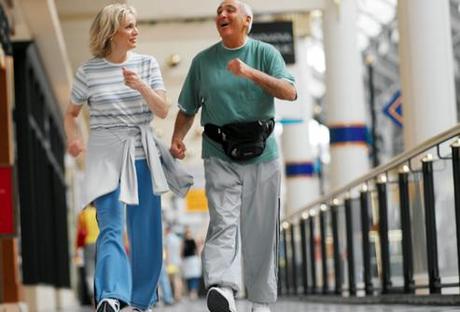
Managing a cardiac problem or recovering from a heart attack is often a difficult experience, involving taking a variety of drugs and altering your lifestyle. One thing that can make a real difference, both to your condition and how much you enjoy your much-changed life, is a well-designed keep fit regime.
Studies have shown that an exercise-based rehabilitation programme is the most effective way to help heart attack victims return to health and avoid further coronary episodes. As such, most doctors now recommend them to patients as a key part of their recovery.
NHS trusts and council-owned leisure centres run special classes for people who have recently suffered a heart attack, and they are usually free if your GP or specialist believes they are suitable for you. If you have the opportunity to undertake one of these courses, which will see an expert help you through the early stages of designing a fitness routine, you should definitely do it.
Should you suffer from angina or have been warned about high blood pressure or another heart-related problem, the situation is slightly different. Exercise can play a major role in managing your condition, but you are unlikely to find specialist classes available to you.
You should consult your GP about whether it is sensible for you to undertake a fitness programme and if there are any restrictions about the type of training you can do. In the vast majority of cases, a doctor will recommend doing exercise, but some will send patients for an electrocardiogram (ECG) test on a treadmill or exercise bike before providing advice about what is safe.
What can you do?
You should ease yourself into your new exercise programme, as doing too much may mean you put strain on your heart and make your condition much worse. Whether you have recently suffered a heart attack or are starting a keep fit routine after being diagnosed with another cardiac condition, your starting point should be gentle walking.
Begin with strolls on a treadmill and gradually build up to the point where you feel able to complete five 30-minute walks outdoors each week. Slight breathlessness and some sweating are nothing to worry about, but if you struggle with your breathing or experience chest pains, stop immediately and seek medical attention.
You can introduce other aerobic exercises into your routine as your fitness begins to build. Jogging, cycling and even using an elliptical trainer will add some variety to your workouts, while you can also return to gardening – although you should steer clear of heavy digging.

Exercise for Heart Patients
Strength and flexibility training can help heart patients, although you should take advice from your doctor or a personal trainer with experience of rehabilitation work before introducing them to your programme. Large weights will remain off limits, but some low-resistance training should be fine.
It’s also worth bearing in mind that breaths of OXYfit pure oxygen can be helpful when it comes to aiding performance when exercising.
Where should you exercise?
People with heart conditions are at a higher risk of being affected by adverse weather conditions, so exercising outdoors when it is unusually hot, cold or humid can be dangerous – particularly in the early stages of your new regime.
A gym or leisure centre is a much better option while you build your fitness, as long as there is one you can easily get to. Let the staff know about your condition and they will help you design a suitable programme.
What should you avoid?
The most important thing to avoid is trying to do too much and ending up becoming overly fatigued, or perhaps even worsening your condition. Things like hill runs, sprint training, bench presses with heavy weights and even exercises that use your own body as resistance, such as press-ups and sit-ups, are all out.
Another big no-no is going to the gym or out for a jog without your medication, or at least information about what you take in case you experience health difficulties. Always remember to take your pills with you whenever you go out and about.
